Physical Address
304 North Cardinal St.
Dorchester Center, MA 02124
Physical Address
304 North Cardinal St.
Dorchester Center, MA 02124
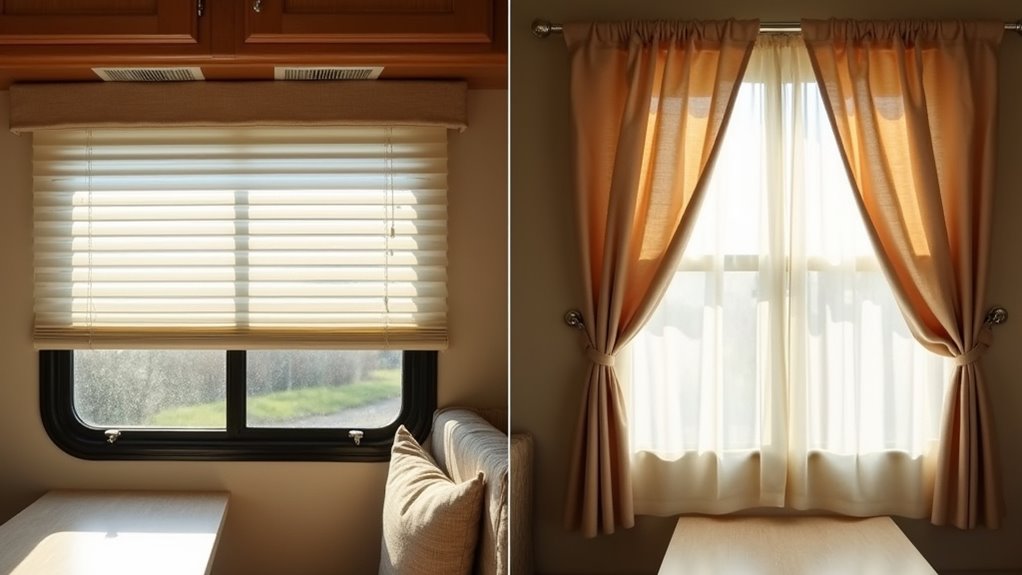
Compare the top window covering choices for your RV lifestyle - from light control to cost, which option truly performs best?
You’ve just parked your RV at a scenic campsite, and now you’re facing a common dilemma: choosing between blinds or curtains for your windows. It’s a decision that’ll impact your comfort, privacy, and wallet for years to come. While both options have their merits, you’ll need to evaluate factors like space efficiency, temperature control, and maintenance requirements. Let’s examine why one choice might serve your mobile lifestyle better than the other.
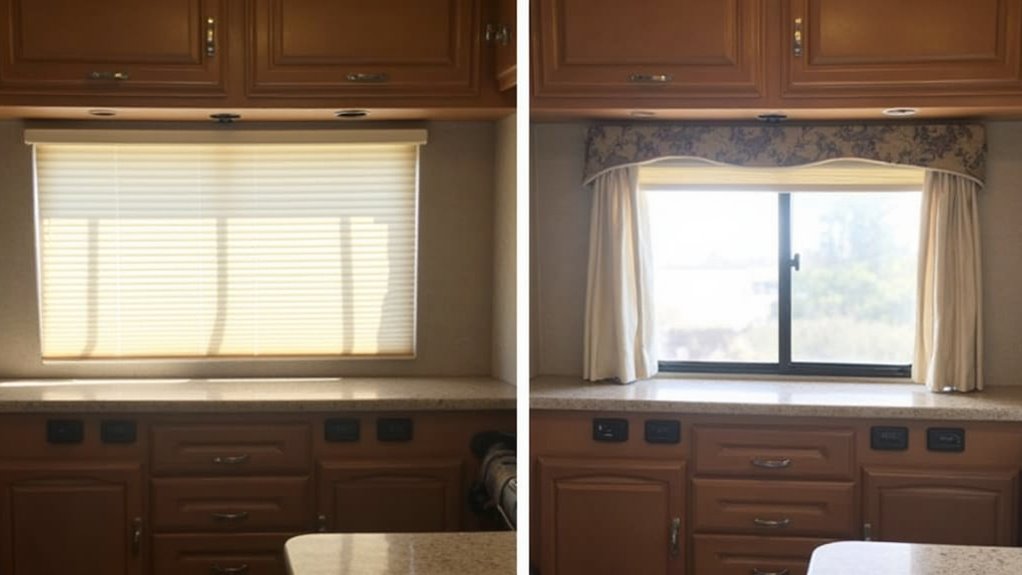
When space is at a premium in your RV, choosing the right window treatments can make a significant difference in your overall storage capacity.
Roller shades stand out as the most space-efficient option, rolling up neatly into a compact cassette without requiring additional storage space. You won’t need valances either, which reduces clutter and maximizes your limited wall space. The entry door placement makes roller shades particularly practical for maintaining easy access.
Roller shades maximize RV space by tucking neatly away, eliminating the need for valances and extra storage considerations.
While curtains can be folded and stored easily, they’ll take up more space than roller shades.
Traditional blinds, such as Venetian or vertical styles, require more room for stacking when opened and may have separate components like cords or wands that need storage.
If you’re looking to maximize every inch of your RV, roller shades offer the best combination of mounting flexibility and space efficiency.
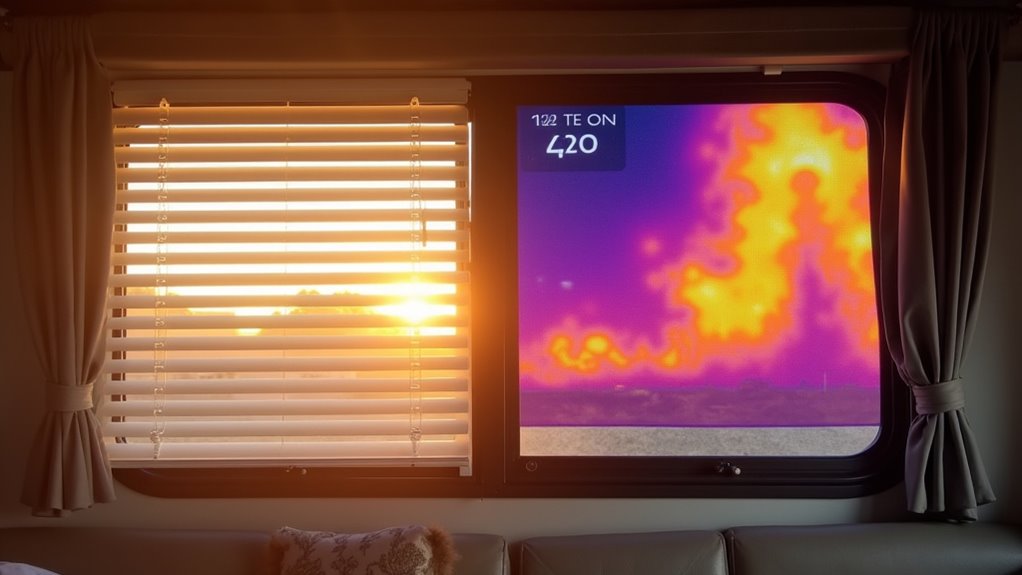
Temperature regulation in your RV can considerably impact both comfort and fuel costs, making your choice between blinds and curtains particularly important.
RV blinds generally outperform curtains in temperature control, offering superior insulation and energy efficiency.
You’ll find that cellular or honeycomb blinds are especially effective, trapping warm air during winter and blocking heat in summer.
While curtains can provide some insulation when fitted with thermal linings, they’re typically less efficient than blinds at maintaining consistent temperatures.
If you’re looking to maximize energy savings, properly installed RV blinds will help reduce your heating and cooling costs.
Inside mounted blinds create a sleek appearance while minimizing heat loss through window gaps.
They’re also more durable and require less maintenance than curtains.
However, you can improve curtains’ performance by adding thermal linings or Insul-Bright material if you prefer their aesthetic appeal.
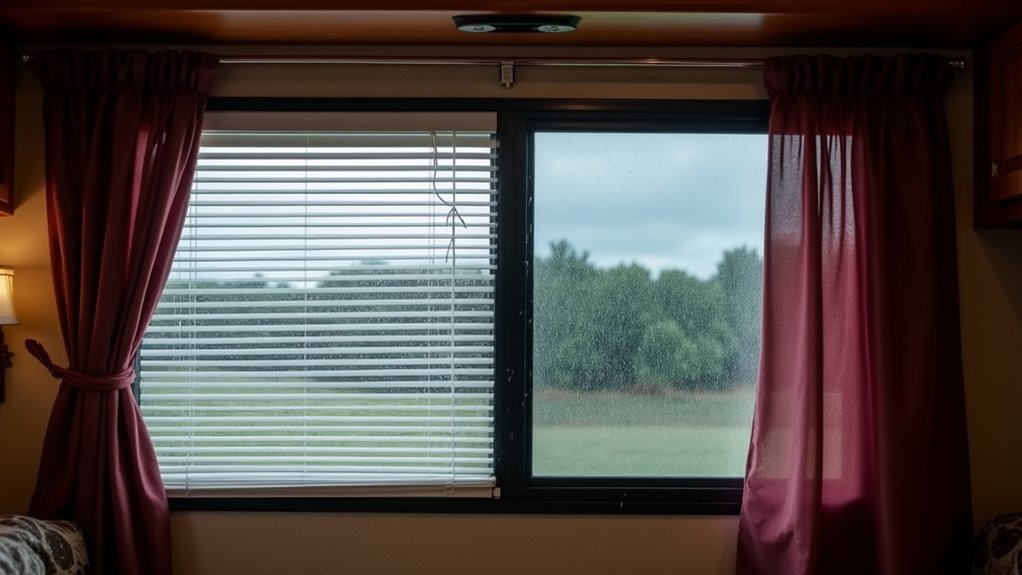
Since sound and movement greatly affect RV comfort, you’ll need to contemplate how both blinds and curtains perform during travel.
Curtains typically offer better sound insulation due to their thicker fabric materials, and they’re less likely to make noise during movement since they don’t have rattling parts.
While blinds can reduce outside noise, especially blackout or sound-absorbing varieties, their slats may create unwanted sounds from vehicle motion and wind. Using hold down brackets can help secure blinds and minimize movement-related noise during travel.
You’ll find that hard-material blinds often require frequent adjustments to minimize rattling, while fabric blinds operate more quietly.
Over time, blind mechanisms can loosen and become noisier unless properly maintained.
If noise reduction is your priority, heavy curtains or fabric blinds will serve you better than traditional slat blinds, particularly during highway travel.
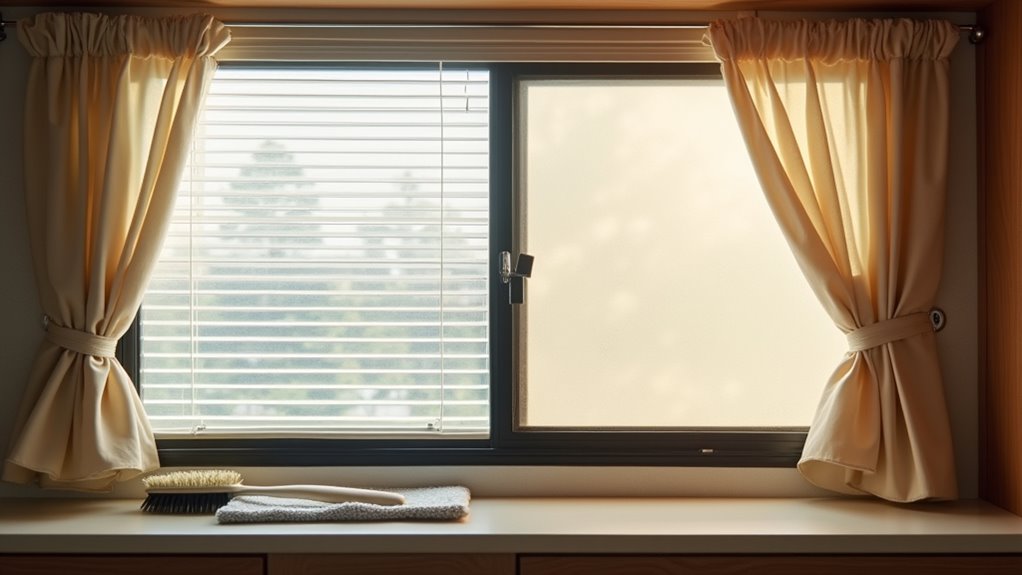
Regular maintenance of your RV window coverings directly impacts their longevity and appearance.
When it comes to cleaning, blinds offer a clear advantage with their smooth surfaces that you can easily wipe down with a damp cloth or vacuum with a soft brush attachment. They’re also more resistant to mildew and environmental damage.
Curtains, particularly in an RV environment, require more frequent attention due to their tendency to trap dust and absorb moisture. You’ll need to machine wash them regularly or spot clean with mild detergent. A delicate cold cycle is recommended to preserve the fabric’s integrity.
While blinds allow for simple slat replacement if damaged, curtains often need complete replacement, which can be costly.
For long-term care in your RV, blinds prove more practical with their durability and easier maintenance routine, especially when dealing with fluctuating temperatures and humidity levels.
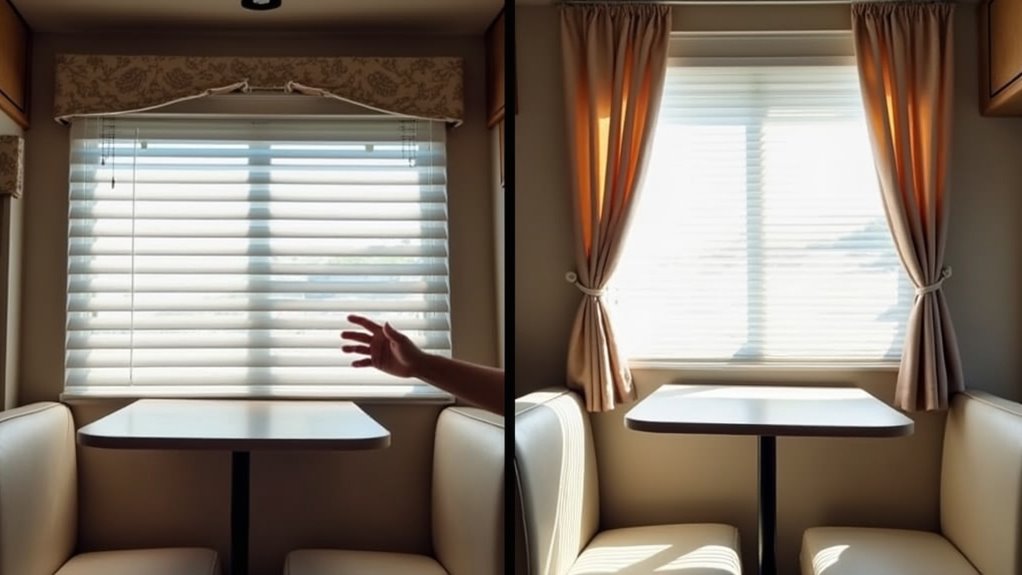
When choosing between blinds and curtains for your RV, light management and privacy needs often guide the final decision.
Day/night shades offer the best of both worlds, combining light filtering and blackout capabilities in a single unit. You’ll get privacy at night while enjoying natural light during the day. The nine color options available for blackout vinyl roller shades provide excellent customization choices.
While curtains with thicker materials like cotton and polyester provide good privacy, they’re less versatile for light control.
Blinds, especially Venetian and vertical styles, let you adjust light levels more precisely. For maximum efficiency, consider cellular shades that help insulate your windows and reduce energy costs.
If you’re tech-savvy, motorized roller shades offer convenient remote operation for large windows.
Inside mounting creates a cleaner look and better privacy by eliminating light gaps around the edges.
RV owners who switch from curtains to blinds can save up to 25% on cooling costs during summer months due to better temperature control. You’ll appreciate how blinds maximize your limited space while offering easy maintenance and superior light management. When you’re planning your RV upgrades, remember that blinds aren’t just a style choice – they’re a practical investment that’ll improve your comfort and reduce ongoing expenses in your mobile lifestyle.